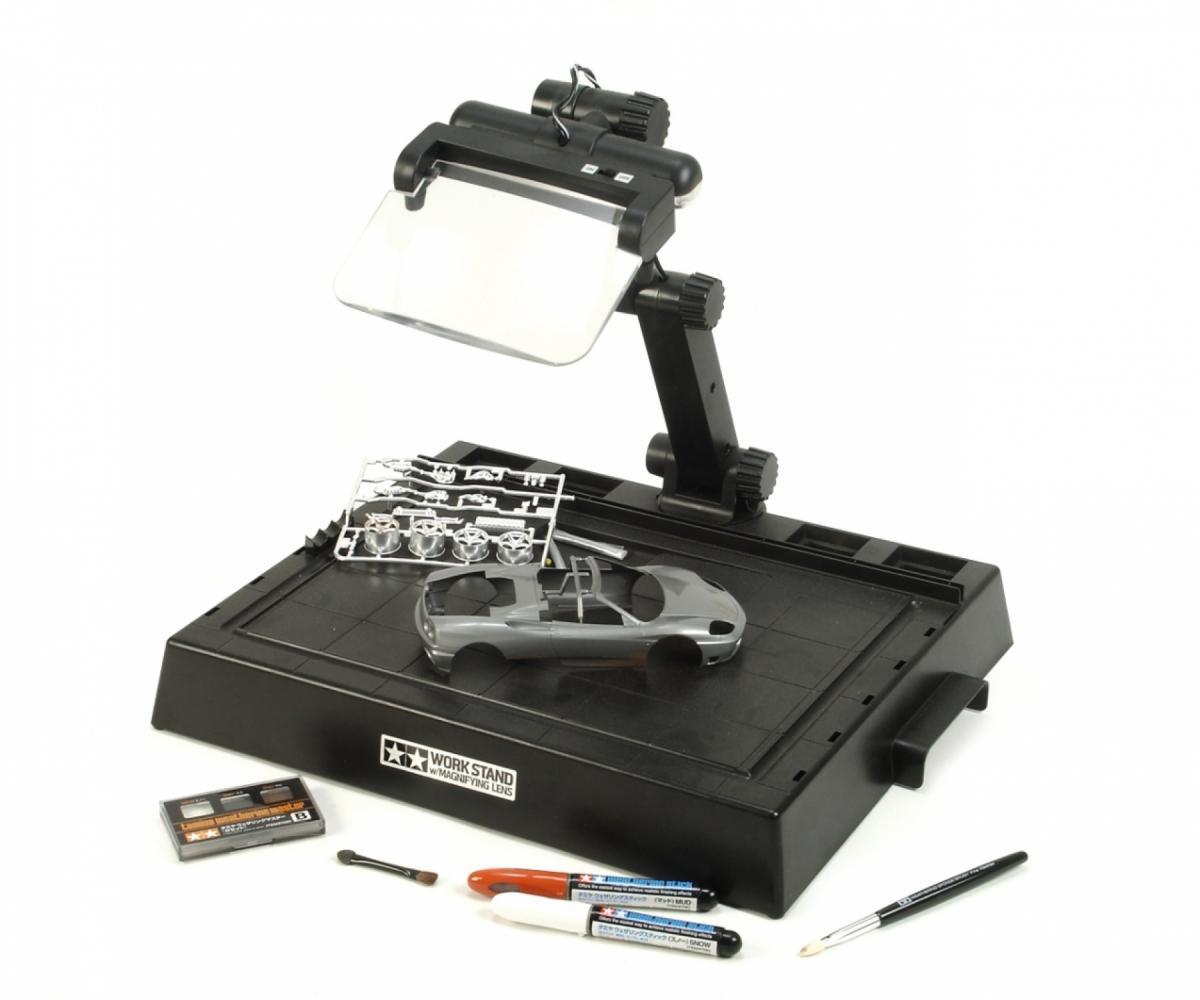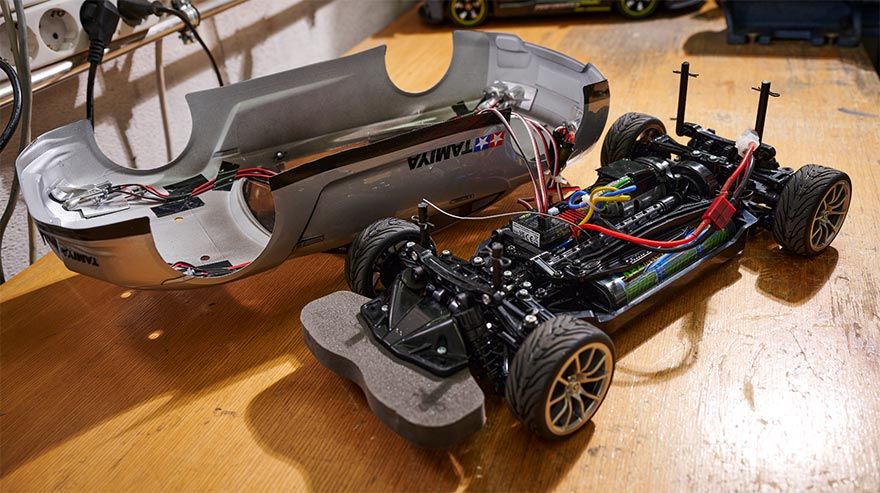Painting RC car bodies - the right way to do it
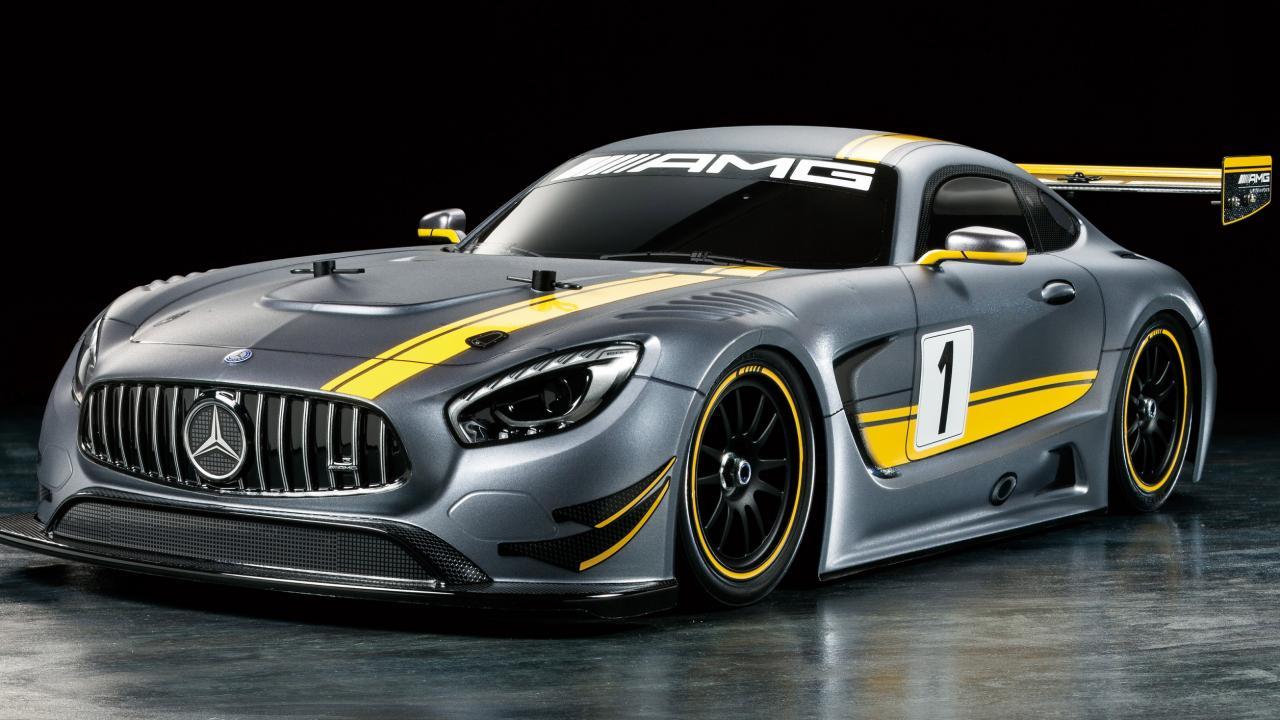
-
By
Oliver K.
RC car bodies (transparent) painting with polycarbonate paint - the right way to do it
You have finished assembling your model car and now want to paint it with suitable colors? Which paints are recommended for an excellent result and what it depends on the RC body painting basically, you will learn in the following guide.
What is polycarbonate paint?
Polycarbonate paint is specially designed for use on polycarbonate surfaces and is therefore ideal for all car bodies made of this transparent/clear material. Polycarbonate (also known as Lexan®) is a tough and impact-resistant plastic that is resistant to UV rays and is particularly durable. You can choose from a variety of different colors and apply them easily by spray can.
Polycarbonate paints from TAMIYA are called PS spray paints and are intended for painting polycarbonate bodies. Usually these are transparent/clear before you paint them with a color from TAMIYA. However, there are plastic add-on parts (mirrors, spoilers, etc.) for these bodies as well these must be painted with TAMIYA TS paints. These are specially developed for painting polystyrene and ABS plastics.
To paint the bodies included in the kit, you have a choice of numerous shades, so you can get really creative when painting RC bodies. Each spray can contains 100 ml of high-covering and oil- and fuel-resistant paint. Perfect so also for painting electric and internal combustion RC vehicles.
All the advantages of polycarbonate paint:
- excellent adhesive properties
- remains flexible
- easy to apply
- very durable
- oil and fuel resistant
- large color selection
With the spray can succeeds Dir the RC body paint quickly and easily, even large areas are no problem. Unlike the airbrush process is subsequently no expensivecleaning of the accessories necessary, the empty spray cans can be easily disposed of.
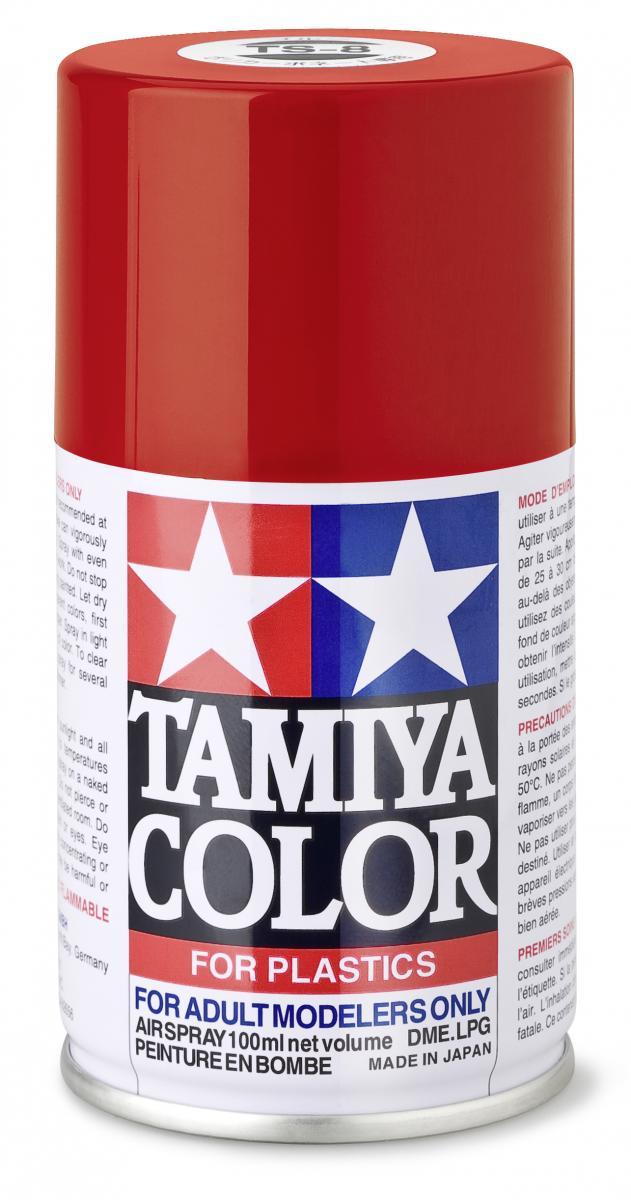
Preparation - what is needed
To get started with RC body painting, some preparation is needed.It's best to choose an outdoor location or a room with enough space and good ventilation. Take your time to get the paint job done properly.
- Remove grease and dirt: Use some dishwater or TAMIYA polycarbonate-body-cleaner (300087118) to remove dirt and grease from the body, so the paint application will hold better. Then rub everything dry with a soft lint-free cloth (eg linen cloth) or let it dry overnight if necessary.
- Work dust-free: Everything should also be completely dust-free before you start with the RC body paint. Remove dust from the workplace by wiping everything with a damp cloth and vacuuming the floor. So you prevent that small dust particles settle on the damp paint layer and ruin the result.
- Prepare substrate: Choose a stable surface for placing the body. Additionally, lay out a base in the work area (eg old newspapers, painting film), so that paint splashes do not contaminate the floor.
- Lay out all parts: Lege all the parts you need to paint the RC body ready. In addition to the body itself, these are the selected modeling paints, a masking tape, cutter knife and sandpaper as well as scissors, a pair of gloves and clamps for fastening small parts.
- Now you can start.
Tip: To protect your lungs from the fine paint mist, a breathing mask is important. If you're not working outdoors, make sure the room is adequately ventilated.
TAMIYA body painting - step by step instructions
Now you can start painting the RC body. Proceed step by step in this order.
- Step 1: Tape all the places that you do not want to paint. Use high-quality masking tape from TAMIYA.
- Step 2: Prepare the spray. For optimal processing, it should be at room temperature. You can place it near the heater or gently warm it up with a hair dryer. Shake the spray can and test the color on cardboard or paper before you spray the body.
- Step 3: If several colors are used, you start with the dark tones. Finally, you paint the lightest color. Keep a distance of about 25 to 30 centimeters from the car body and always spray with the can in one direction, such as horizontally, vertically or diagonally. Spray hard-to-reach places several times.
- Step 4: Let the paint dry for about an hour and then apply up to three more coats. Go briskly when painting, so that no color bubbles form.
- Step 5: Then paint light areas with white or silver after, so that everything is nice opaque. Again, three to four passes are necessary.
- Step 6: Small paint defects you improve with a paint remover such as the TAMIYA Paint and Varnish Remover.
- Step 7: Remove all glue joints and let the finished painted body dry for 12 to 24 hours at room temperature.
- Done!
Tip: The result will be perfect if you spray the colors in a distance of about 25-30 cm in several thin layers. Let the paint dry between two applications first (about 30-60 minutes), so you prevent an unsightly nose formation.
The matte finish - finishing the polycarbonate body.
To give your polycarbonate body a "matte" finish. The protective film is removed from the body after your painting. The body parts (windows, headlights, taillights), which should continue to shine in high gloss, are masked with masking tape from "outside". As with "normal" painting, the TAMIYA matt paint PS-55 is painted over from the outside in several thin layers at intervals of 25 to 30 centimeters. And again, between the respective layers of paint approx. 30-60 minutes drying time to plan. However, if the decor should also get the matte finish off, then this must still be applied before painting.
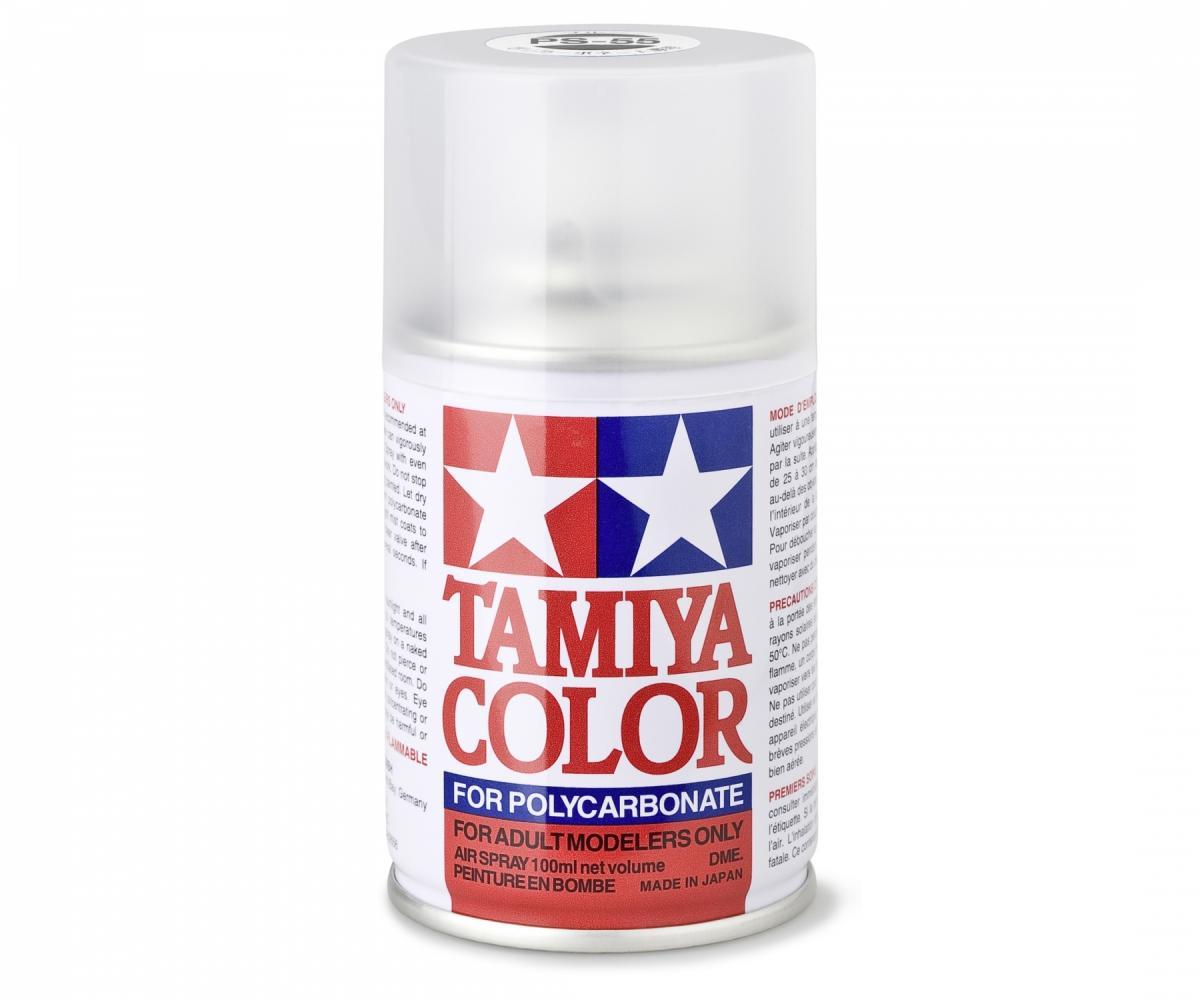
Conclusion: Painting car bodies made easy
RC polycarbonate models are best painted with PS paints from TAMIYA. The TAMIYA PS colors are matched to TAMIYA polycarbonate bodies. When painting the RC body, the most important thing is to do it very carefully. First, you tape off everything well that is not to be painted, and then apply individual layers of paint step by step.
With the PS spray paints from TAMIYA, the paint application succeeds very easily. Always follow the instructions of the respective RC model. It is important that you specifically paint the ABS parts with TS/AS paints from TAMIYA. If black plastic parts are to be given a lighter color, note the following. Prime the plastic parts with a TAMIYA primer (white, light gray, dark gray, pink or oxide red) and then use TS-101 Base White, this will make it easier to follow up with lighter shades and also provide color coverage.
In addition, TAMIYA still offers special paints and varnishes that are ideally suited for airbrush painting. Also further accessories for professional model making are available in the assortment.
